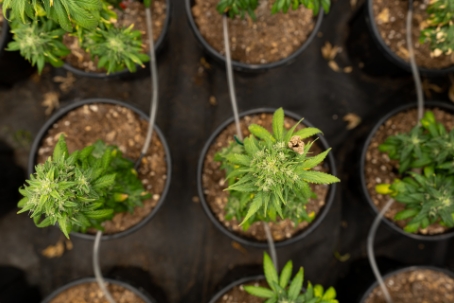Science
Learn more about the benefits of CBD.
Cannabidiol modulates serotonergic transmission and reverses both allodynia and anxiety-like behavior in a model of neuropathic pain
Posted on December 28, 2018
Abstract
Clinical studies indicate that cannabidiol (CBD), the primary nonaddictive component of cannabis that interacts with the serotonin (5-HT)1A receptor, may possess analgesic and anxiolytic effects. However, its effects on 5-HT neuronal activity, as well as its impact on models of neuropathic pain are unknown. First, using in vivo single-unit extracellular recordings in rats, we demonstrated that acute intravenous (i.v.) increasing doses of CBD (0.1-1.0 mg/kg) decreased the firing rate of 5-HT neurons in the dorsal raphe nucleus, which was prevented by administration of the 5-HT1A antagonist WAY 100635 (0.3 mg/kg, i.v.) and the TRPV1 antagonist capsazepine (1 mg/kg, i.v.) but not by the CB1 receptor antagonist AM 251 (1 mg/kg, i.v.). Repeated treatment with CBD (5 mg/kg/day, subcutaneously [s.c.], for 7 days) increased 5-HT firing through desensitization of 5-HT1A receptors. Rats subjected to the spared nerve injury model for 24 days showed decreased 5-HT firing activity, mechanical allodynia, and increased anxiety-like behavior in the elevated plus maze test, open-field test, and novelty-suppressed feeding test. Seven days of treatment with CBD reduced mechanical allodynia, decreased anxiety-like behavior, and normalized 5-HT activity. Antiallodynic effects of CBD were fully prevented by capsazepine (10 mg/kg/day, s.c., for 7 days) and partially prevented by WAY 100635 (2 mg/kg/day, s.c., for 7 days), whereas the anxiolytic effect was blocked only by WAY. Overall, repeated treatment with low-dose CBD induces analgesia predominantly through TRPV1 activation, reduces anxiety through 5-HT1A receptor activation, and rescues impaired 5-HT neurotransmission under neuropathic pain conditions.
Keywords: Cannabidiol, Pain, Dorsal raphe, Electrophysiology, Anxiety
Keep Reading >


